I sat here looking at my screen, a blank page with my cursor blinking. The cursor taunted me, as if it were waiting for me to open up this Jeep history article with something epic.
But the story behind the iconic Jeep is something you don’t have to embellish to make epic. The true story of what really happened already is.
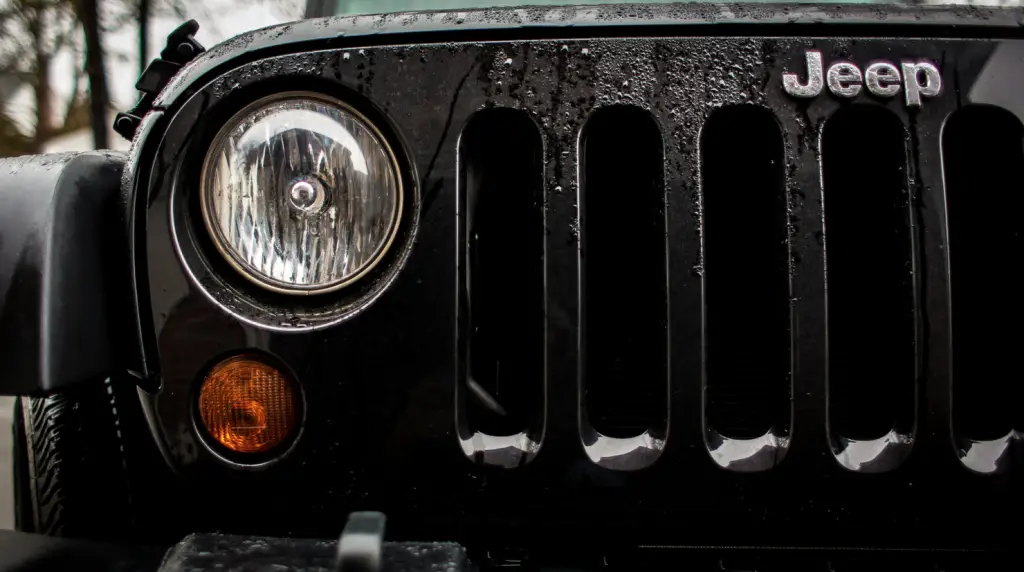
Jeep Origins
Let’s just start by saying that if you love the Jeep brand, you can thank the United States Army. Without the Army there would simply be no Jeep history.
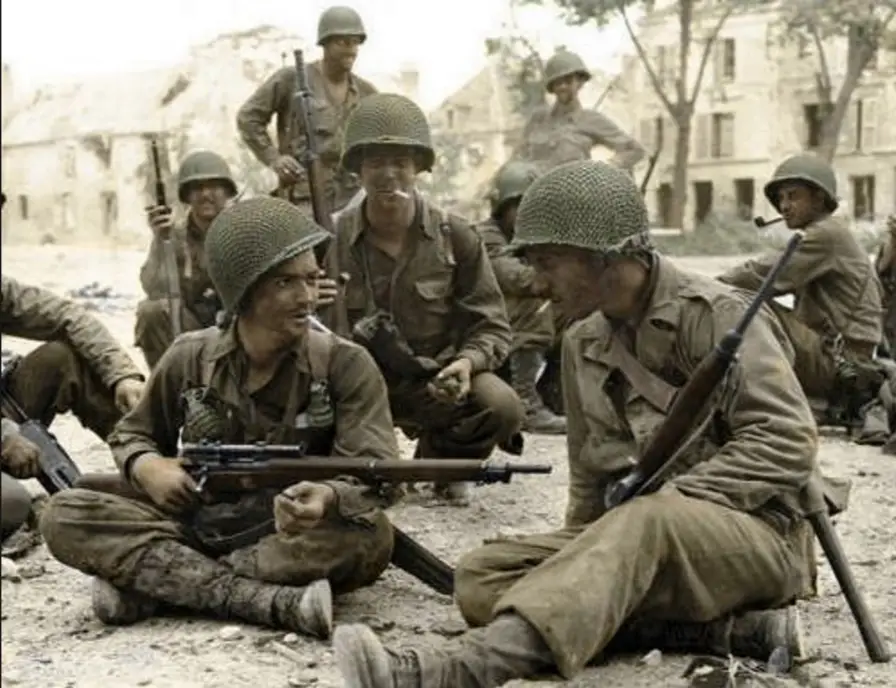
In late 1939 to early 1940 the entry of the United States into WWII was imminent. The writing was on the proverbial wall. Though America didn’t officially enter the war until December 7, 1941 it was clear that the nation was not going to be able to stay out of the conflict, regardless of what Roosevelt had promised America.
The Army needed a new scout reconnaissance vehicle that didn’t exist yet, and they needed it yesterday. By the summer of 1940 the United States Department of War was under immense pressure to get this vehicle into production.
Like all military requisitions, they had to put together their specific requirements and date of delivery demands. As you read these, especially the timeline, remember this was 1940. There were no computers, they didn’t exist until around 1946 at the earliest. Communication speed between the Army and the contractors was also a factor.
In short, the Army demanded the creation of something that didn’t exist, in an impossible timeframe.
Jeep History Begins With a Requisition
The Army originally had 8 specific requirements for its light reconnaissance scout vehicle. The vehicle must:
- Be 4-wheel drive
- Carry a crew of 3 personnel
- Have a wheelbase, from the center of the front wheel to the center of the back wheel, of no more than 75″ (Later upped to 80″)
- Have axle tracks, from the centerline of one wheel to the centerline of the other wheel on the same axle, of no more than 47″
- Feature a fold-down front windshield.
- Be capable of carrying 660 pounds
- Be powered by an engine cable of 85 foot pounds of torque.
- Have an empty weight not to exceed 1300 pounds.
In addition, the Army’s delivery timeline was as follows:
- Bids for the contract needed to be delivered to the Army in 11 days.
- Manufacturers had only 49 days to produce their first prototype for consideration.
- Manufacturers had 75 days to produce 70 test vehicles.
Sound insane? It was.
The Army sent out it’s initial requirements to 135 domestic auto manufacturers on July 11, 1940. Only 2 companies were crazy enough to respond that they could meet the Army’s requirements, American Bantam Car Company and Willys-Overland Motors. <~~ This fact becomes really important later on in the story.
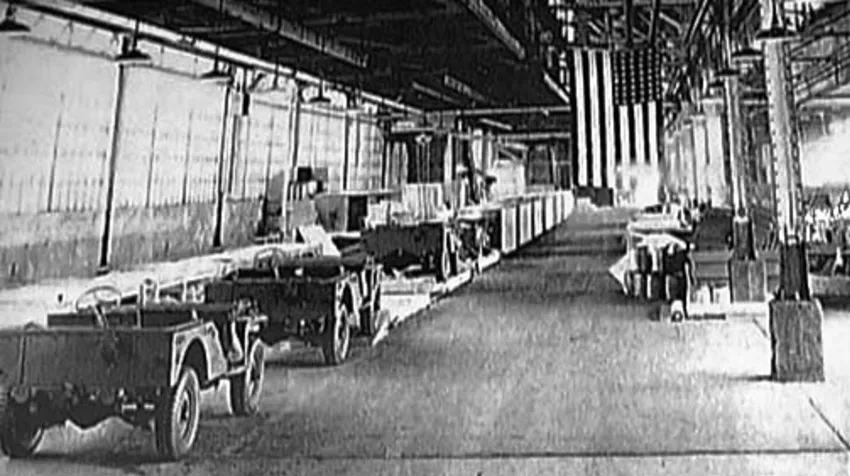
Unfortunately Willys-Overland couldn’t actually meet the timeline requirements.
So in the end, the Army got only one prototype from one company: American Bantam Car Company. The team was led by a designer Bantam had recruited named Karl Probst.
American Bantam Car Company Gets The Shaft
Probst designed the American Bantam Car Company prototype which was called the “Blitz Buggy” in 2 days. On September 23, 1940 the vehicle was delivered to the Army in Holabird, Maryland for initial testing.
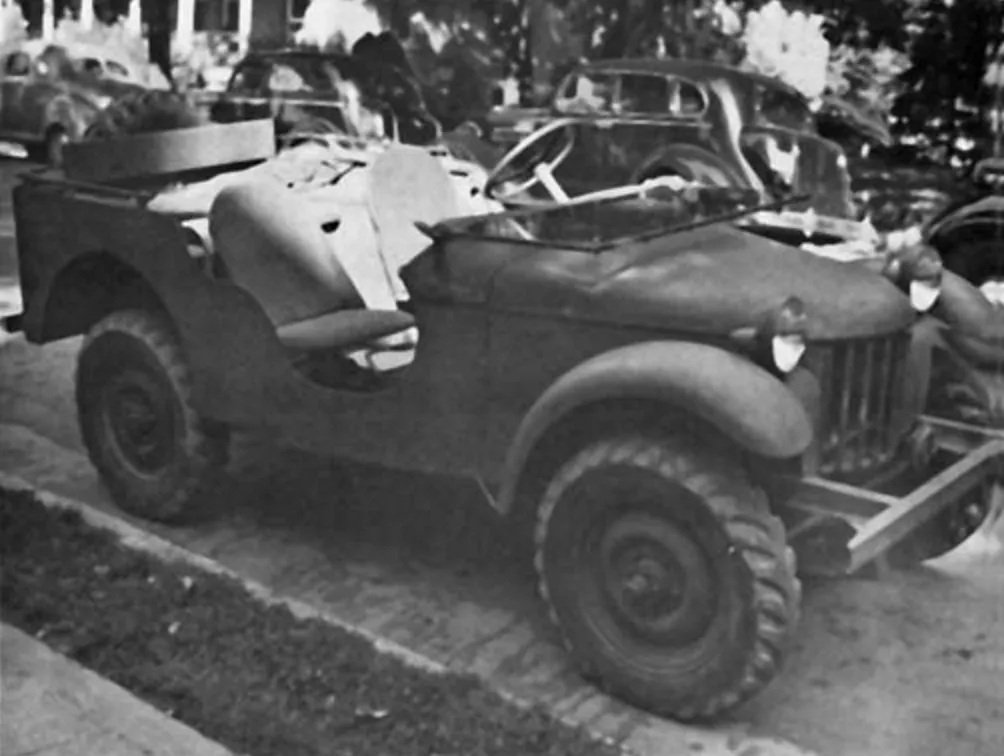
So that’s it right? American Bantam Car Company designed the Jeep?
Well, no… not exactly. This is where it gets a little complicated.
Competitors Willys-Overland and Ford Motor Company were conveniently in the stands to watch “spy on” the testing.
American Bantam Car Company was in serious financial trouble and technically the Blitz Buggy failed to meet the Army’s requirements. If that weren’t enough, Bantam simply didn’t have the production capacity to deliver the amount of vehicles the Army required.
The Army was in a pickle.
The Army Gets What the Army Wants
If the Army awarded Bantam the contract, they wouldn’t be able to get what they needed.
So instead, the Army encouraged Willys-Overland and also Ford Motor Company to get involved. How convenient that they were there for the testing of the Blitz Buggy, right?
Not only that, the Army made the controversial decision to provide Willys-Overland and Ford Motor Company with the blueprints of the American Bantam Car Company’s design! Talk about encouragement to get involved.
Keep in mind this was after the competition got to watch the Blitz Buggy in action during trials and take notes on what worked and what didn’t!
What?
Yep. Sound a little fishy to you too eh?
Well, the Army claimed that they “owned” the design and Bantam didn’t argue the point, supposedly because of their unstable financial issues. Though, there might actually have been more to the story. Regardless, Willys-Overland and Ford were now back in the running.
3 Companies Fight for a Place in Jeep History
By November 1940, Ford Motor Company and Willys-Overland had prototypes in the Army’s hands. The Willys-Overland prototype was called the Quad, and Ford’s was called the Pygmy.
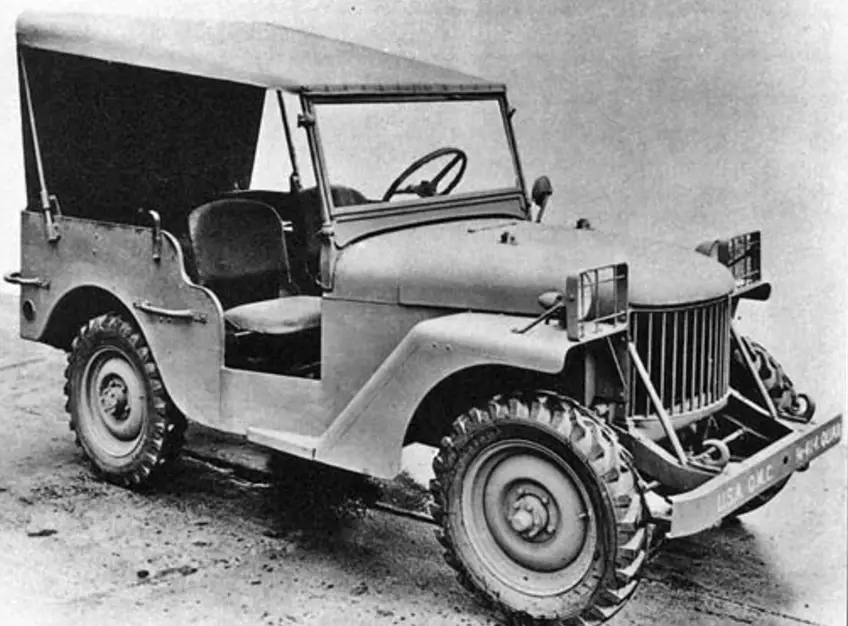
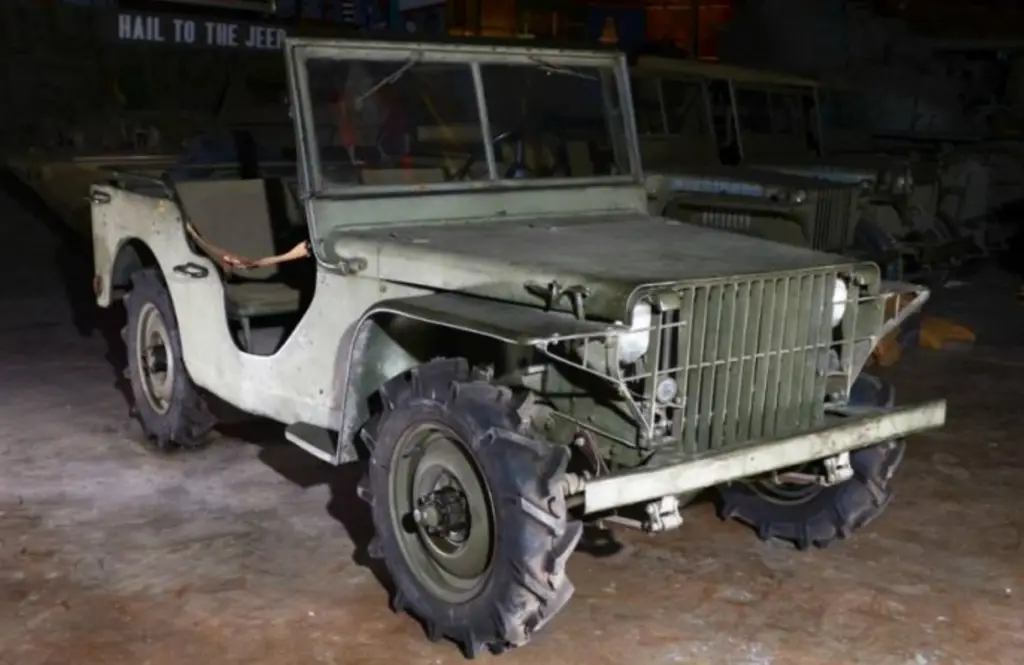
By this time, the original Blitz Buggy by Bantam had gone through its own series of changes and was now called the Bantam Reconnaissance Car 40 or BRC 40 for short.
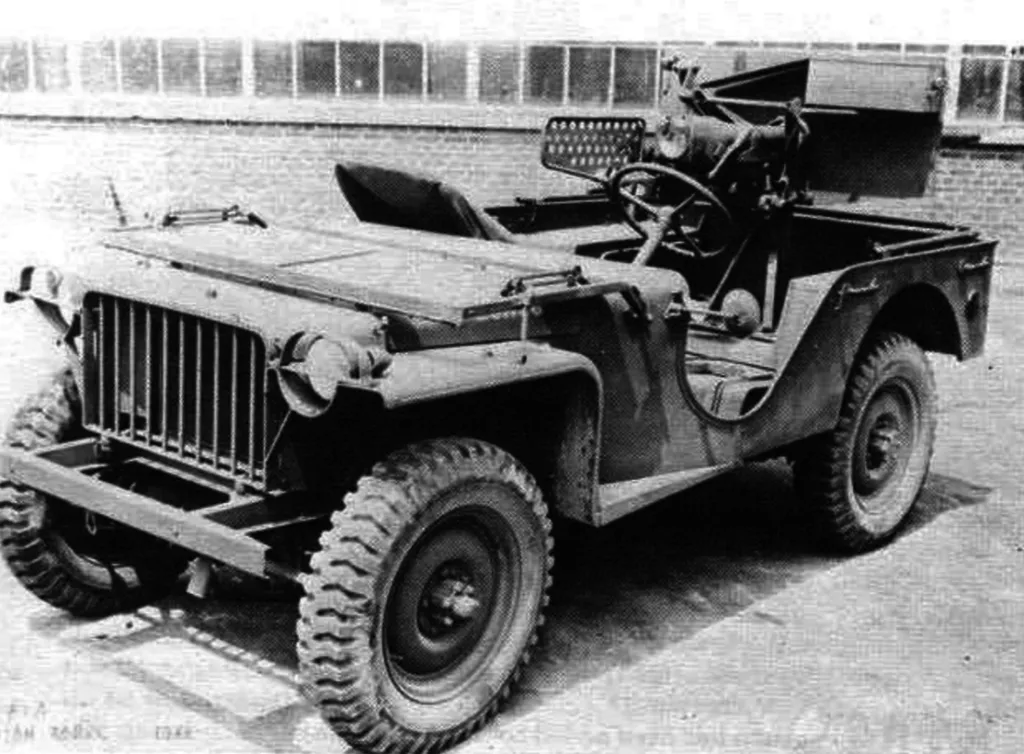
Wouldn’t you know that all three designs were strikingly similar? Go figure, they all had a set of Karl Probst blueprints to use as a launch point.
However, the Willys-Overland Quad outperformed the competition at this series of Army trials in late 1940. The engine for the Quad dubbed the “Go-Devil” was superior to the other prototypes by far, but the Quad was still too heavy and still required a redesign.
In the end it didn’t really matter. The Army was under a great deal of pressure from the Department of War. As a result, the Army declared all three prototypes to be “acceptable.”
The Army Selects The Winner of the Contract
Since all three companies had been deemed “acceptable” by the Army, the manufacturers asked for the empty weight requirement to be increased. The Army, based on the trials, conceded that their initial requirement was unrealistic. Because of this the Army raised the empty weight requirement from 1300 pounds to 2160 pounds..
In addition, the Army provided additional feedback to the manufacturers based on the most recent series of tests. Then the Army placed orders for 1500 from each of the three manufacturers for field testing. The pre-production models would be required to incorporate the latest feedback.
So now with a few modifications to their existing prototypes, all three companies American Bantam Car Company, Willys-Overland and Ford Motor Company were producing their own versions of the Army’s new scout vehicle.
- American Bantam Car Company produced a model called the BRC 60 (Bantam Reconnaissance Vehicle)
- Willys-Overland produced a model called the MA (For Military model “A”)
- Ford Motor Company produced a model called GP (G stood for government, P stood for passenger car)
After field testing all three vehicles, the Willys-Overland MA which featured the “Go-Devil” engine won the first production contract. Willys made a few more modifications before finalizing the design, and designated the new scout vehicle the MB (Military model “B”.)
The Army selected the MB design for production. Moving forward the MB became the standardized Jeep design that would be built at the factory in Toledo, Ohio.
Jeep History Is Made
Officially the Jeep brand recognizes their birthday on July 15th, 1941. This was the day that Willys-Overland received the contract to produce 18,000 MB models.
Why they consider this day the day Jeep history was made, I’m not entirely clear. In some ways it makes sense, in others not so much.
I would have thought that Jeep would recognize the beginning of Jeep history on September 23, 1940 when the Blitz Buggy was delivered to the Army in Holabird, Maryland for initial testing. After all, the Blitz Buggy was the first Jeep.
Or maybe if you’re a hardcore Willys-Overland fan, an even earlier date of July 11, 1940 when the Army sent out the initial requisitions. But it wasn’t to be. Jeep history is officially recognized on July 15th, when Willys-Overland got the contract for the MB models and that’s all there is to it.
Regardless of what date Jeep chose as their birthday, the Army required more Jeeps than Willys-Overland could produce. So Willys-Overland granted the government a non-exclusive authorization for another manufacturer to build the Jeep to meet production demands using the Willys-Overland license. The Army chose Ford Motor Company, and American Bantam Car Company, the original designer was effectively pushed out of Jeep history.
The new Ford Motor Company version was dubbed the GPW (the “W” stood for the Willys license)
By February 1941, the Army’s scout reconnaissance vehicle was in full use during the war. Though the origins of the term Jeep are in question, what is not in question was that everyone was calling the Army’s new scout vehicle a Jeep.
American Bantam Car Company Gets A Small Victory
After the war, Ford sued Willys for the rights to use the term Jeep, but they lost the lawsuit and Willys-Overland kept full and sole rights to the name.
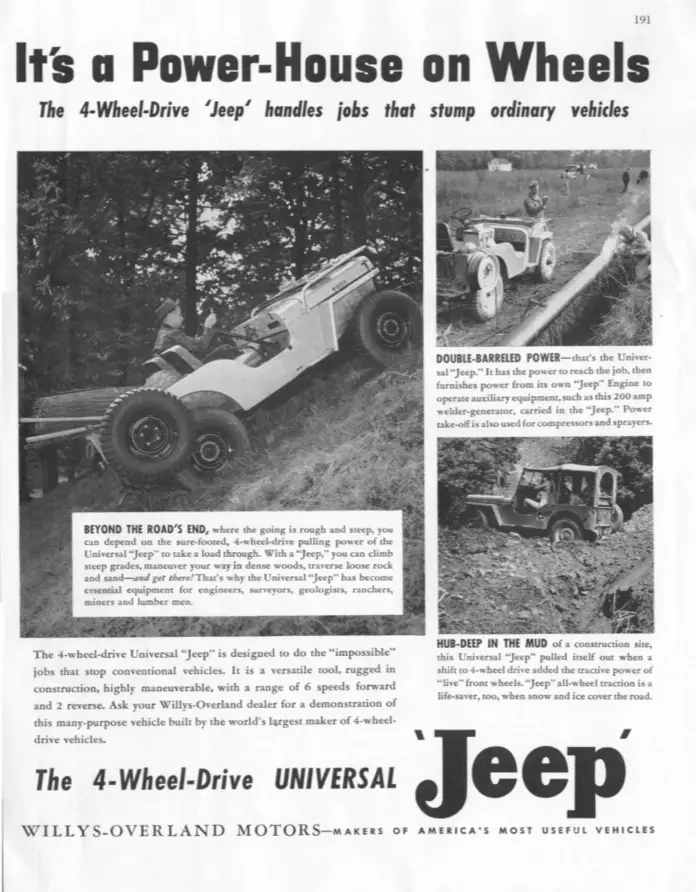
Willys-Overland began producing Jeeps for civilians in 1945 with their CJ model which stood for Civilian Jeep. They continued predominately uncontested until 1948 when American Bantam Car Company stepped back into the picture.
Remember at the beginning of this article when I told you that American Bantam and Willys-Overland were the only 2 companies out of 135 to submit bids, and that this fact would become important later on? Well, here is what happened. In 1948 American Bantam went to the Federal Trade Commission and stated that the idea of creating the Jeep was solely originated and developed by Bantam and they were the only company to originally produce the vehicle for the Army.
The FTC agreed and barred Willys from claiming that it had created the Jeep and only allowed it to claim that it contributed to its development. But as fate would have it, American Bantam finally went bankrupt two years later in 1950 and Willys-Overland was officially granted the Jeep trademark.
Jeep Today is Fiat Chrysler Automobiles
As you can see, Jeep history is complicated, and it gets even more complicated after Willys-Overland was given the trademark. Try and stay with me on this…
Willys was eventually sold to Kaiser Motors which became Kaiser Jeep. American Motors Corporation (AMC) bought out Kaiser’s stake in Jeep, Renault invested in AMC and got in the mix. Then Chrysler swooped in and bought out AMC. Chrysler then merged with Daimler-Benz and formed Daimler Chrysler who then sold their interests to a private equity company.
The Jeep brand ended up operating under the Chrysler Group LLC until 2014 when the name was changed to FCA US LLC.
What does FCA US LLC stand for?
Fiat Chrysler Automobiles.
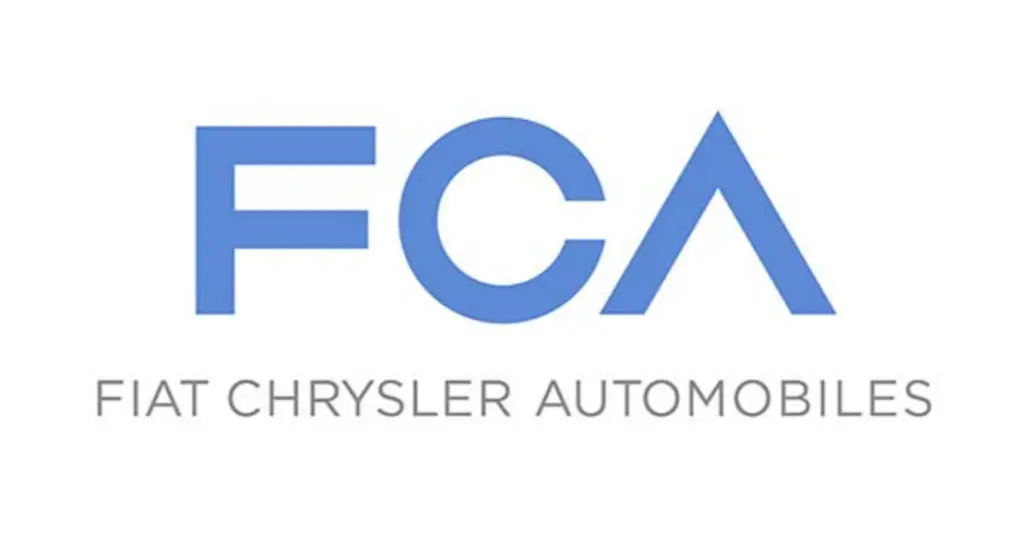
FCA US LLC owns and/or is involved with: Alfa Romeo, Chrysler, Dodge, Fiat, Ram, Mopar, DriveSrt and of course Jeep.
So You Are Telling Me I Own a Fiat?
Heck no! A Jeep is a legacy, it is a tradition. It eats little imports for snacks.
Let’s face it, a Jeep is one awesome piece of history in your hands. It was built for the war effort and simply has no rival. Many have tried to copy it, but the truth is that they have all faded away while the Jeep has stood the test of time and continues to do so.

Like all things, Jeep continues to go through its stages of existence. But the proud history behind this incomparable vehicle lives on, in, and through Jeep lovers around the world.
Hope you enjoyed this little walk through Jeep history as much as I did. I learned so much myself in the process.
Until next time, keep it dirty and wheels side down.
~ Eric

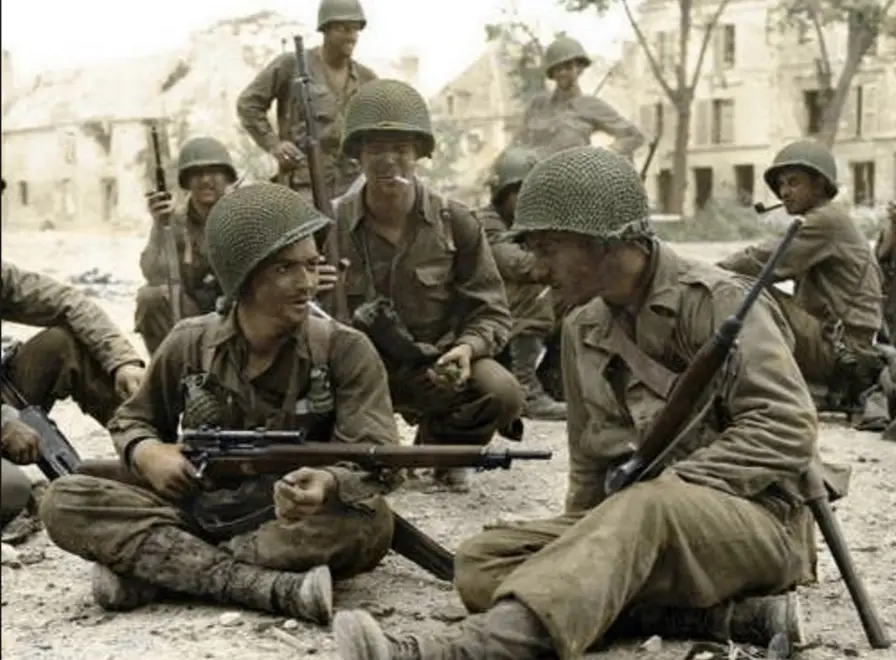


Great read. I knew many things about the process, but not about the soap opera within the first testing and launch. Wow… and as they say, “the rest is history.”
Thanks Troy. Actually, this is the toughest article I’ve written in awhile. The story is so complex a book could be (and probably has been) written about it. As I did the research for this article my head was spinning with all of the intricacies of the details. Obviously I needed to summarize what I learned in the process, but I was fascinated with the story itself. Glad you enjoyed it, thanks for the comment.
Great article. You briefly touched on this, but is it true that the name JEEP came from the misconstrued GP. As in soldiers were quickly tired of say GeePee… and slanged it up to Jeep! Or I guess if we spelled it correct it would be GeeP
Great question Jeremy. I actually left that out of the article because there is no definitive answer.
However, most people believe that it comes from the Ford Motor Company designation of GP (which was later changed to GPW to denote the Willys license.) In this theory, the soldiers slanged it to the phonetic “Jeep” and it stuck.
Willys-Overland contests this and has stated that President of Willys-Overland (1939-1944) Joe Frazer coined the phrase by slurring the letters together. Not sure I buy into this as the Willys model was called the Pygmy and then later the MA followed by the MB. So those who argue this “naming” credit are arguing that the President of Willys-Overland coined a phrase using Ford Motor Company’s model designation. Sounds like a weak argument to me.
However, other theories have arisen which are also viable.
The famous cartoon Popeye had a character called Eugene the Jeep who was Popeye’s pet. Folks who argue this theory say that no common solider would have known the designator of GP anyway and because of this would have never slanged the name into what it is today. Instead they were more likely to name the vehicle after this cartoon character pal of Popeye’s who could travel between dimensions and solve problems. Not sure if I buy this either.
Another theory is that military mechanics had been using the term Jeep as a common term as early as 1914 to describe test vehicles. These were mostly aircraft and tractors but also other ground vehicles as well. This may have been the origin.
Truth is, we don’t really know.
What we do know is that the application for the brand name trademark of Jeep was filed by Willys-Overland in February 1943, and they were sued by Ford Motor Company (who lost the suit) and later by American Bantam Car Company in 1948 (who won the suit as stated in my article above) but Bantam went bankrupt in 1950 and the trademark was officially given to Willys.
So that’s the way I understand it. Let me know if you find anything else.
Here’s a rabbit trail to follow, check out the history of the Minneapolis-Moline tractor company. The tractor company laid claim to the Jeep name too
Oh my. I don’t have enough hours in the day to follow rabbit trails, but this one I must… thanks Gene! Better get some coffee. ~ Jeepsies
Fascinating article about the vehicle that i have long admired. Now the proud owner of my 3rd wrangler, not to mention a grand cherokee, a cherokee, and 2 compasses.
Wow Wayne! A true Jeeper! Glad you are here and hope to see more of your comments. I’m sure you’d have a lot to share with the community. ~ Jeepsies
Wow, great history lesson! And easy to follow. As a first time Jeep owner, for about three years now, I’ve often asked other owners about the history of the Jeep. The answers I get are ambiguous at best. But what you’ve written here has allowed me to follow the history and its complications. Very cool. I have fallen in love with this vehicle. I used to drive fast cars looking for an adrenaline rush when it was in my Jeep the whole time.
Thank you Trish! I’ve fallen in love with the Jeep too. The history of this iconic vehicle is fascinating to me. As they say, “Yours may be fast, but mine can go anywhere.” :) ~ E
Eric, This is a good article and I thought from my research that most of these facts were true. However, after talking to Bill Spear who wrote the book “Warbaby: The True Story of the Original Jeep”, Karl Probst had little to do with the first jeep design. Harold Crist probably deserves most of the credit. See https://warbaby.wmspear.com/
As far as the origin of the name “Jeep”, it was being used by military guys prior to the idea of the Bantam Blitz Buggy. There is proof of this here; Popular Science, Feb. 1940 pg. 120 (The term “Jeep” used for Army flight simulator). I have yet to find it in print anywhere before 1936 so I do believe it came from the Popeye comic strip.
Just my thoughts,
Thanks,
Joe Kidd
Retired Air Force C-130 Mechanic
Joe, first off, thank you for your service!
Also appreciate you taking the time to comment here on the blog. You know, the more I learn about the history of the Jeep the more fascinating it becomes. I’d love to sit and talk with Bill Spear some day and compare notes. The truth is that all of my personal research pointed me to what I wrote above. So while I’m not arguing your point, I’m fascinated and interested and would love to learn more. I’m sure there are others out there who have forgotten more about the history than I know. If you ever run into Bill again let him know he’s got a guy that would like to sit down for a coffee with him. ~ Eric
Thanks for this article! I’m fascinated by the Jeep history and have loved Jeep vehicles since before I was old enough to drive legally. I currently have an older Grand Cherokee that I’m planning on keeping until it starts costing too much to maintain. I’m planning on getting a Wrangler in the future as a second vehicle.
I’m curious about something and wondering if you know. Do you know the approximate date of the last Jeeps to be manufactured before Fiat took over? I know Fiat took over starting some time in 2014 but what were the last Jeeps manufactured by the Chrysler Group?
Thanks!
So glad you enjoyed the article Vania! I love looking into the history of this iconic vehicle as well. Glad you are keeping that Grand Cherokee! As far as your question, the honest answer is “I’m not 100% sure.” I believe that the following may be true however… Chrysler purchased Jeep in 1987 when they acquired AMC. They then began to produce Jeeps under the Chrysler banner until 1998 when they merged with Daimler-Benz. So my guess would be that the last Jeeps produced by Chrysler were in 1998 prior to the merger. Hope that helps! ~ Eric